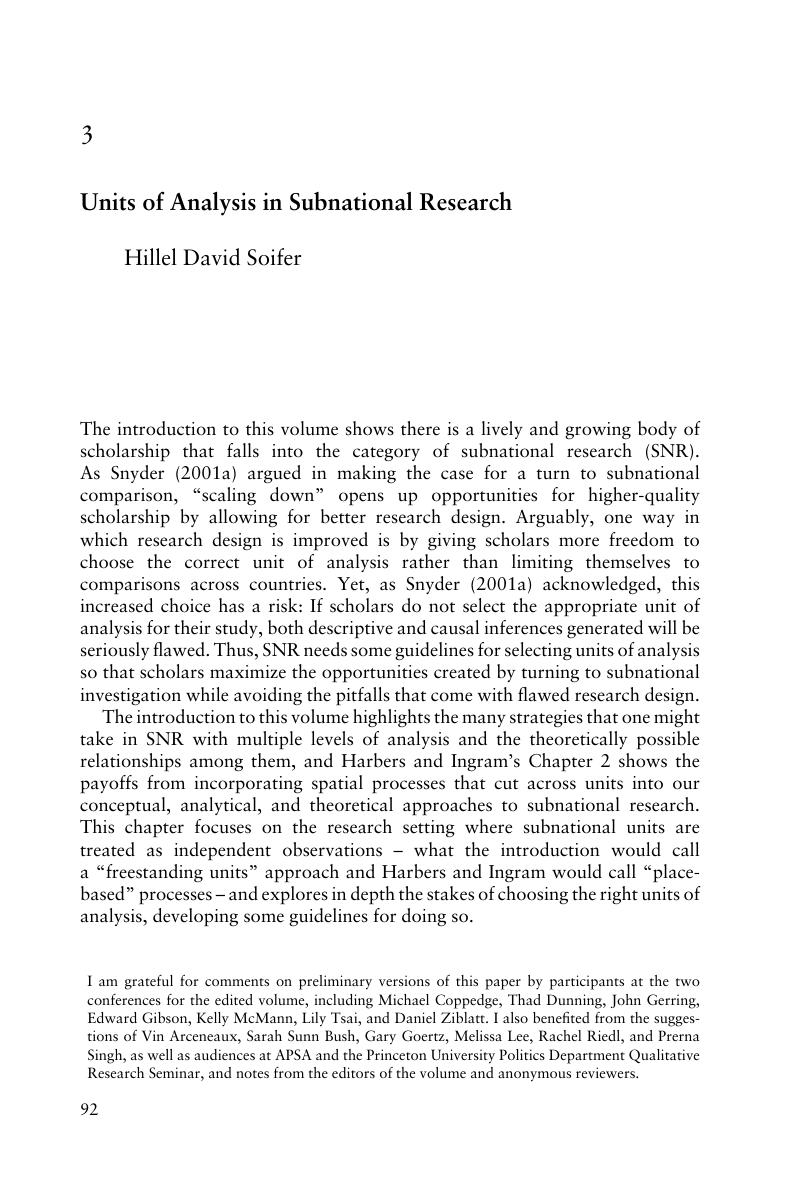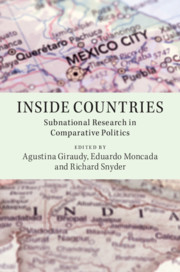Book contents
- Inside Countries
- Inside Countries
- Copyright page
- Contents
- Figures, Tables, and Maps
- Contributors
- Preface and Acknowledgments
- Introduction
- Part I Issues of Method and Research Design
- 2 Politics in Space
- 3 Units of Analysis in Subnational Research
- Part II Regimes and Representation
- Part III States and Security
- Part IV Social and Economic Development
- Conclusion
- Index
- References
3 - Units of Analysis in Subnational Research
from Part I - Issues of Method and Research Design
Published online by Cambridge University Press: 13 June 2019
- Inside Countries
- Inside Countries
- Copyright page
- Contents
- Figures, Tables, and Maps
- Contributors
- Preface and Acknowledgments
- Introduction
- Part I Issues of Method and Research Design
- 2 Politics in Space
- 3 Units of Analysis in Subnational Research
- Part II Regimes and Representation
- Part III States and Security
- Part IV Social and Economic Development
- Conclusion
- Index
- References
Summary

- Type
- Chapter
- Information
- Inside CountriesSubnational Research in Comparative Politics, pp. 92 - 112Publisher: Cambridge University PressPrint publication year: 2019
References
- 12
- Cited by



